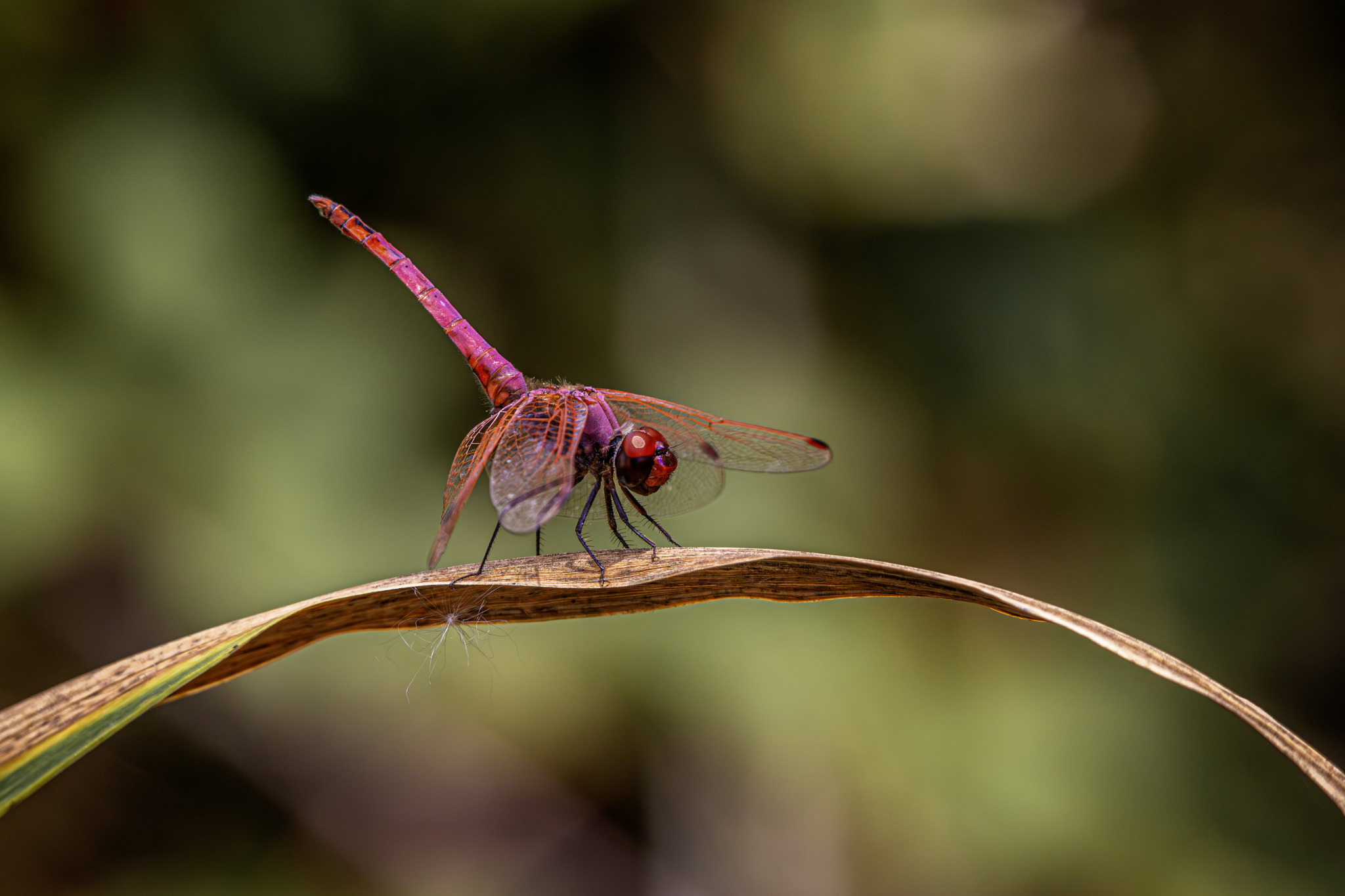The VioleThe Violet Dropwing (Trithemis annulata) is a striking and colorful dragonfly species belonging to the family Libellulidae. Known for its vibrant hues and widespread distribution, this species is a favorite among dragonfly enthusiasts and nature observers.
Description
- Appearance:
- Males: Mature males are particularly distinctive, with a vivid violet-blue abdomen and thorax, which contrasts sharply with their reddish-orange wings. The wing veins are also red, adding to their striking appearance.
- Females: Females are less colorful, typically displaying a yellowish-brown or olive color with brown markings, which helps them blend into their surroundings more effectively.
- Size: The body length ranges from 32 to 40 millimeters, with a wingspan of about 60 to 70 millimeters.
Habitat
- Distribution: The Violet Dropwing is widely distributed across Africa, southern Europe, the Middle East, and parts of Asia. Its adaptability has allowed it to expand its range northward in recent years.
- Preferred Environment: This dragonfly thrives in a variety of aquatic habitats, including ponds, lakes, rivers, marshes, and even temporary pools. It prefers sunny locations with ample vegetation for perching and hunting.
Behavior and Ecology
- Diet:
- Adults: Adult Violet Dropwings are carnivorous and primarily feed on small flying insects such as mosquitoes, flies, and other small invertebrates.
- Larvae: The aquatic larvae, or nymphs, are also predatory, feeding on various aquatic organisms, including mosquito larvae, small fish, and other aquatic invertebrates.
- Reproduction:
- Mating: Males are territorial and often engage in aerial displays to attract females and ward off rivals. After mating, females lay their eggs in water by dipping their abdomen into the surface while in flight.
- Life Cycle: The larvae develop in water, undergoing several molts before emerging as adults. The entire life cycle from egg to adult can take several months to a year, depending on environmental conditions.
Conservation
- Status: The Violet Dropwing is not currently considered threatened and is generally abundant within its range. Its ability to adapt to various habitats has helped maintain stable populations.
- Conservation Efforts: Ensuring the health of aquatic ecosystems and reducing pollution are vital for maintaining healthy populations of this and other dragonfly species. Conservation efforts also focus on preserving wetland habitats and mitigating the impacts of habitat destruction.
Observing Violet Dropwings
- Best Times: They are most active during the warmer months, typically from spring through autumn.
- Watching Tips: Look for them near bodies of water, where they often perch on vegetation or rocks. Males are easier to spot due to their bright coloration and frequent territorial displays.
Interesting Facts
- Color Change: The vivid violet coloration in males develops as they mature, starting with a more subdued color in juveniles.
- Perching Behavior: The species gets its name “dropwing” from its characteristic habit of perching with wings held downward, unlike many other dragonflies.
- Distribution Expansion: In recent years, the Violet Dropwing has expanded its range northward, likely due to climate change, showing remarkable adaptability to new environments.
Summary
The Violet Dropwing (Trithemis annulata) is a visually stunning and ecologically significant dragonfly species. With its vibrant coloration, especially in males, and widespread presence across various regions, it plays a crucial role in controlling insect populations and maintaining the health of aquatic ecosystems. Observing these dragonflies offers insight into the beauty and complexity of freshwater habitats and highlights the importance of conserving these environments.
Views: 155
Subscribe to the newsletter:
